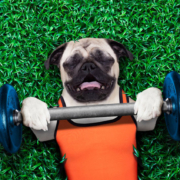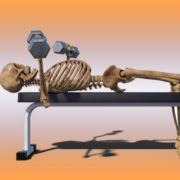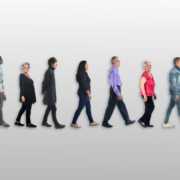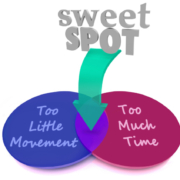Observations and Questions About the Step Study
Most research papers such as the step study I began to review on Thursday have a main point, sometimes a couple points, and that’s all we take from it. But there some interesting things that may not get headlines but are still worth mentioning. Let’s take a look at some other results from the steps and mortality study.
Observations
Whatever you might believe about exercise was proven true by this study—not the positive outcomes such as the decrease in overall mortality, as well as CVD and cancer mortality, but questions that paint a picture of who exercises. For every category, from education to smoking to alcohol consumption, what we would expect was confirmed. But we also learned that people are high steppers who we would not expect to be.
For example, would we expect obese subjects to be in the fewer than 4,000 steps per day category or in the greater than 12,000 steps per day category? You would be right if you thought most were in the more sedentary category; 36.7% of those with a normal BMI were in the highest step category. But it doesn’t mean that there were no obese subjects in the greater than 12,000 steps per day category; in fact, 24.8% of those with BMI greater than 30 were in the highest step category.
Why? That’s what we really need to find out. What makes them different? Why are they doing what we don’t expect, or did they just do that well when they wore the accelerometer? If we want to change behavior, that’s what we need to find out.
This was an observational study, so it cannot prove cause and effect, but it gives us insight into the type of studies that will be able to determine cause and effect, such as randomized controlled trials. They can be better designed by building on this study.
Questions
Because we’re in a “Stay Home and Stay Safe” environment, there were some logical questions about stepping and coronavirus infections but I couldn’t find a single answer. When I searched for “fitness and coronavirus,” I found the term fitness meant fitness of the virus, not humans.
I used different search combinations and finally decided to try exercise and coronavirus. There were a number of papers that were written in the last couple of months about the safety of exercise during the pandemic as well as exercise to relieve stress for first responders, but those are still not exactly what I wanted. I wanted to see if steps or exercise would reduce the rate of catching coronavirus, any coronavirus.
I didn’t find that, but I discovered an interview with exercise immunologist Dr. Jeffrey Woods. Rather than summarize it for you, I’m giving you a link to this article for you to read. While it’s difficult to prove improved resistance to coronaviruses, Dr. Woods’s creative research has come close. As long as most of us have the time, I suggest that you read it.
The Bottom Line
Research studies such as the one I’ve reviewed this week tell us a lot about what we know and what we still need to find out. There are too many questions left on the table that never get answered related to diet, nutrition, and exercise. Do you really get all the nutrients you need if you eat a perfect diet? No one knows because no one has ever tested it. Let’s hope we get some answers related to diet, fitness, and supplementation as it relates to the prevention and possible treatment of the coronavirus when this challenge is all over, but I’ll go out on a limb and say you’ll never be worse off by being in better shape. Now that many of us have more time, let’s work on that.
What are you prepared to do today?
Dr. Chet
References:
1. JAMA.
2020;323(12):1151-1160. doi:10.1001/jama.2020.1382.
2. Journal
of Sport and Health Science 9 (2020) 105-107.









